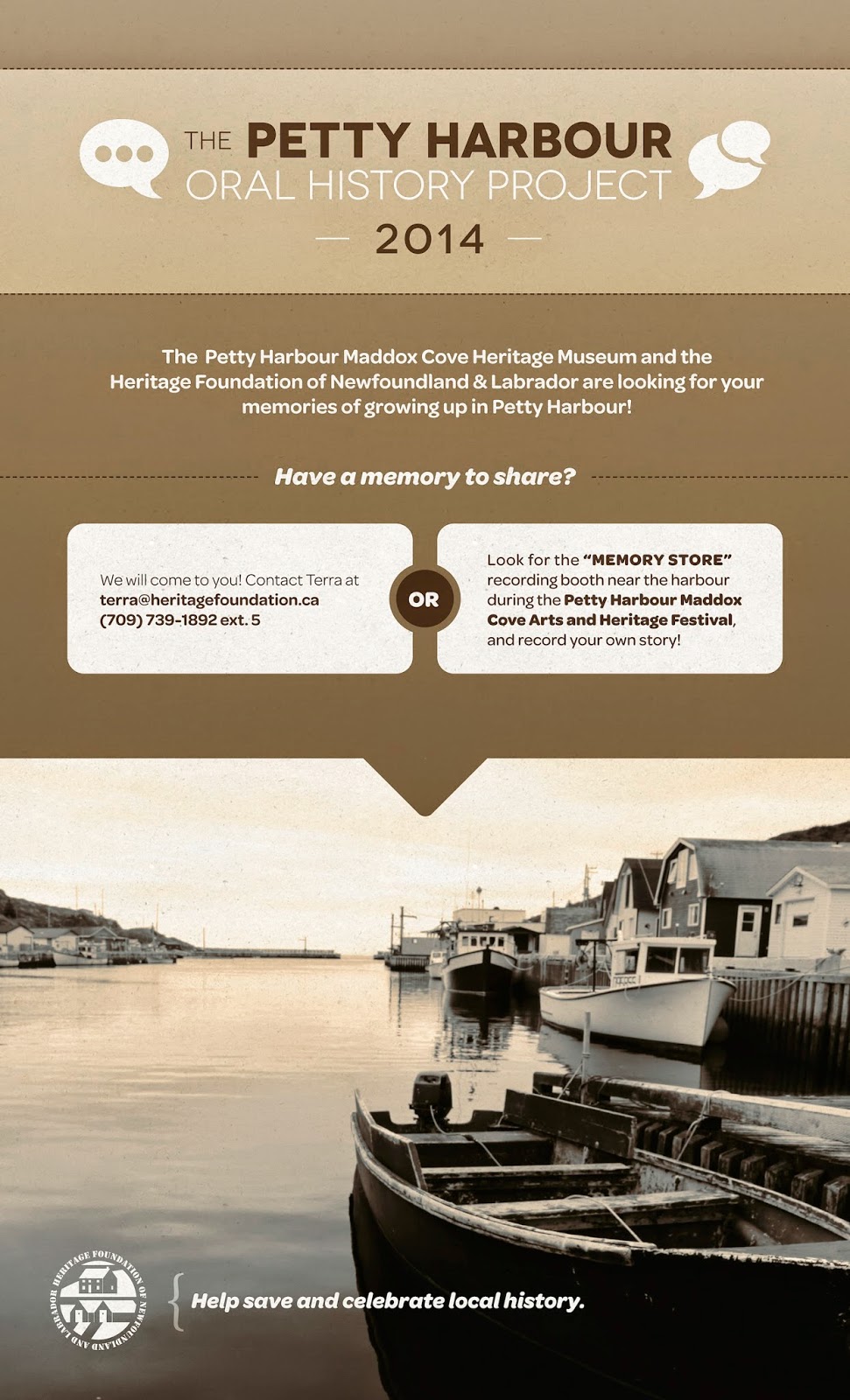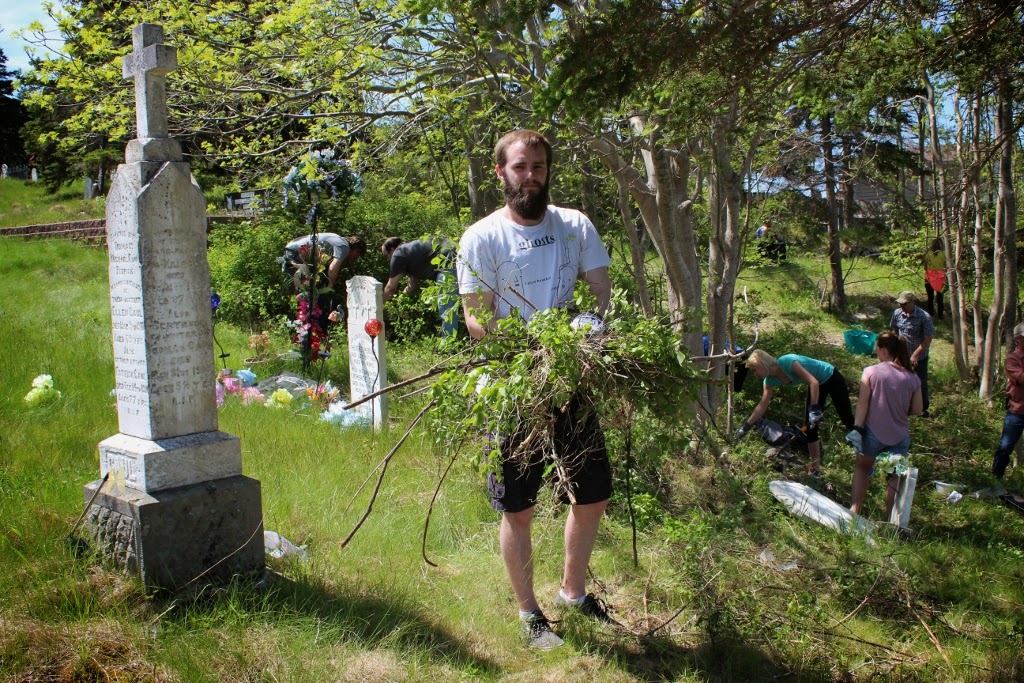.jpg) |
| Petty Harbour |
During my interviews in Petty Harbour-Maddox Cove I have come across several folk beliefs particularly beliefs about being on the water. From whistling up a wind to not being able to turn your boat against the sun there have been a number of interesting folk beliefs shared.
As previously mentioned on the blog Petty Harbour resident Ann Payne described being warned not to cross the river at night when it was easiest to be fairy led. Ann and her mother Annie Lee explained a story about Ann’s uncle whose leg was broken by fairies and who was held in the water of the Petty Harbour river for four hours. Other members of the community have also mentioned fairy beliefs such as being warned to keep a piece of bread in their pocket for the fairies when walking through the woods.
Gertrude Walsh of Petty Harbour explained that if a bird pecked at the window it was an omen of a death to come. Another warning of upcoming death is three knocks at the window. Gertrude explained that she heard three knocks at a second floor window and when she woke the next morning she received a phone call that her brother had died in the night.
A couple of people have mentioned having to have the gang boards facing the right direction while in a fishing boat. Gordy Doyle explains this belief:
The boards, the pound boards that you have right? To cover up your fish, to put your fish in pounds according to the size of the boat. You would never have them up right? You would have them painted and the opposite side would be painted a different colour. You would never have them turned over in the boat. You just don’t do that. And I’m not superstitious at all but it’s just something that I don’t do and I if I see it turned over [I’ll say] “No b’ys turn the gang board back over”.
.jpg) |
| Gertrude and Jack Walsh |
I can remember one time this man, and myself and his son we used to knock around together. So we were going out to the cod trap this evening in the boat. Two of us were sat down and we were only young, you know. Not old enough to go fishing or anything but just going for a run with the men and we were sat down in the boat and we were going along. It was a make and break motor then they called it and I don’t remember which one of us started to whistle and we knew nothing until down came the big stick and hit the boards between the two of us and he shouted don’t dare whistle in this boat he said, whistle up a storm.
If he had a small fish, a tomcod, one got left in the boat and all the fish is out of her. And he got up the next morning to go fishing and saw one of them there it would be a job to get him to go out. That was a jinker. They called leaving a fish in the boat like that a jinker. Bad, bad thing to do.
Mike also went on to explain he didn’t share this belief about jinkers and described an incident where his fishing crew had a jinker left in the boat for days and were hauling in loads of fish every day. They only noticed the jinker because of the smell but the crew joked that they should put one on the other side as they were getting such large loads of fish with the jinker in the boat.
Do you have any folk beliefs? Beliefs about being on the water? What are they? Share your stories below – we’d love to hear them!



.jpg)









.jpg)
.jpg)



.jpg)




.jpg)
.jpg)
.jpg)
.jpg)
.jpg)

.jpg)











